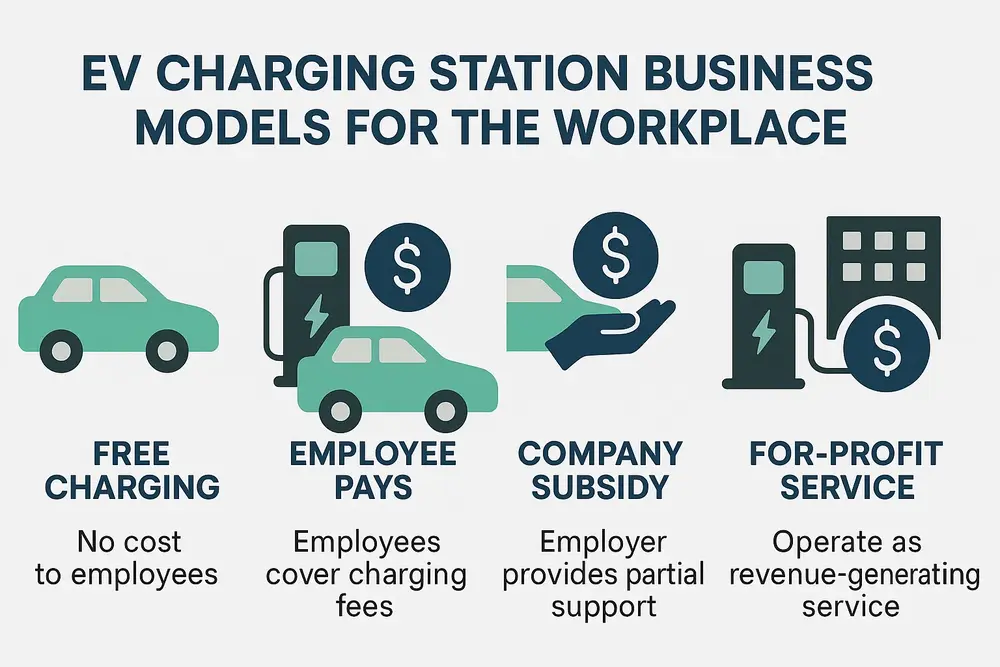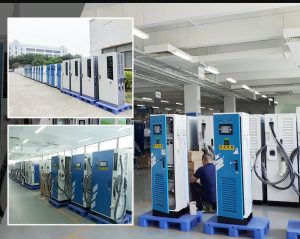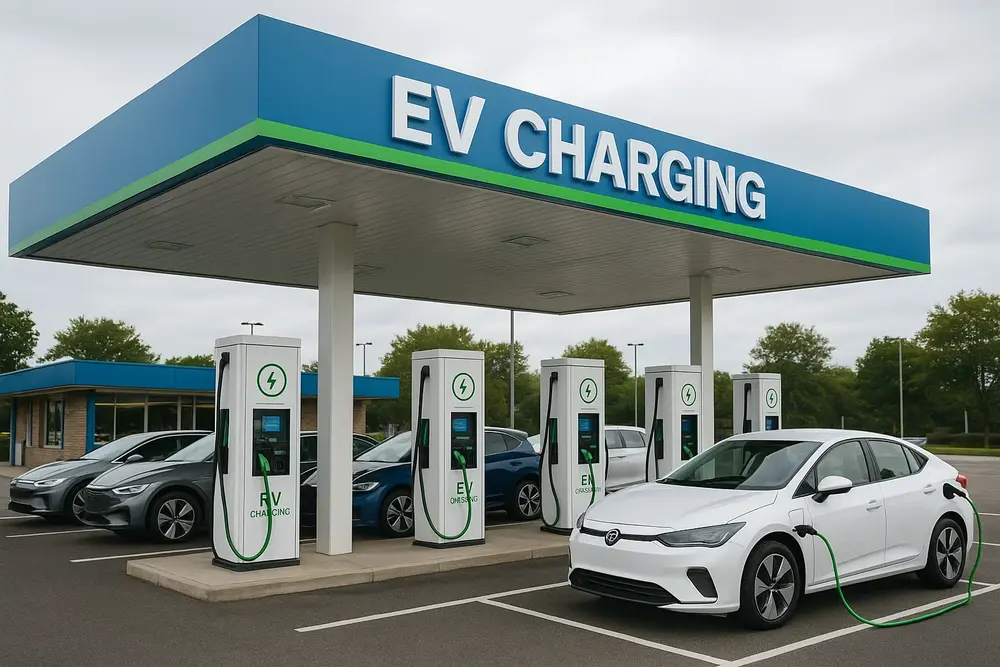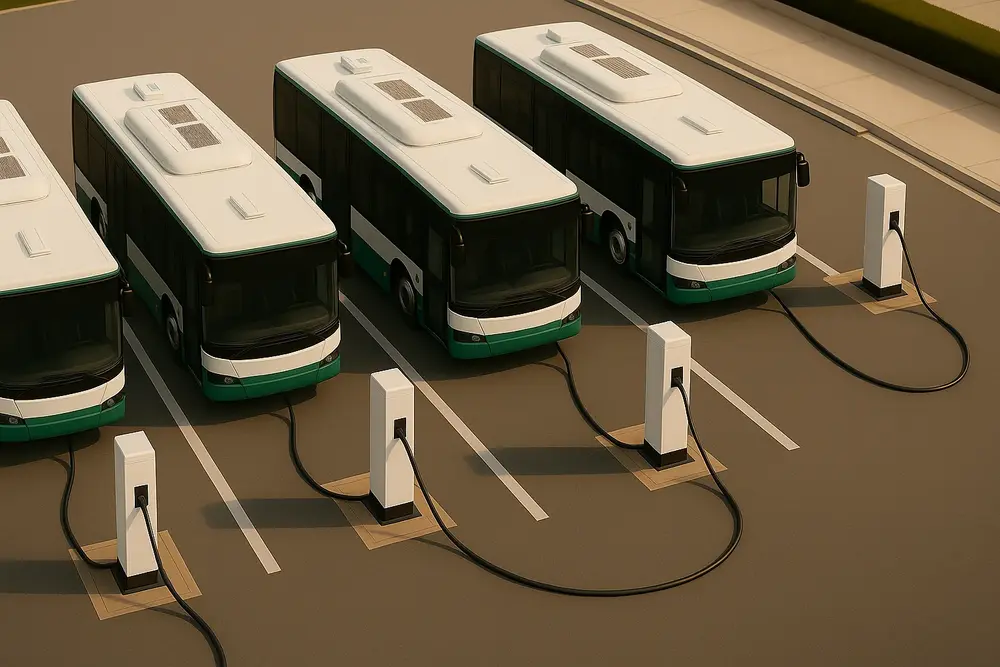
Products
Fast, Reliable, Everywhere

Solutions
Efficient, Innovative EV Charging Solutions.
News
We are committed to the innovation and application of EV charging.
As electric vehicle (EV) ownership continues to rise, workplaces have an opportunity to support sustainability while enhancing employee benefits or even generating new revenue streams. Two primary business models dominate when it comes to workplace EV charging infrastructure.

In this model, companies provide complimentary access to EV charging stations for employees or approved users. This can be framed as part of the company’s employee value proposition (EVP), adding to a range of benefits that attract and retain top talent.
Providing free workplace charging supports employees who may not have access to home charging—particularly in urban areas or apartment complexes. It also enhances job satisfaction and reinforces the company’s environmental commitment, which is increasingly important to today's workforce.
Alternatively, organizations may decide to implement a paid charging model, where users—whether employees, customers, or guests—pay for the electricity consumed. Pricing can be tiered, offering discounted rates to staff while charging standard fees to external visitors.
This approach not only offsets electricity costs but may also generate a new source of income. In customer-facing industries or locations with high vehicle traffic, the chargers can also serve as a draw, increasing foot traffic and cross-selling opportunities.
Global EV sales have skyrocketed in recent years, with electric cars making up a growing percentage of the overall automotive market. This surge includes company fleets, as businesses increasingly shift to electric vehicles for both environmental and economic reasons.
Even companies without their own vehicle fleets can benefit from installing charging points. With more employees driving EVs, workplace charging becomes an attractive amenity and a tool for boosting loyalty and recruitment.
Some employees may be hesitant to switch to an electric vehicle due to a lack of access to private home charging, especially in densely populated areas. Workplace chargers can eliminate this barrier, offering a practical and reliable charging option during office hours.
Importantly, charging services don’t need to be completely free. Even discounted access can make a substantial difference for employees and can be structured to balance convenience with cost recovery.
Beyond internal staff, offices often receive visits from clients, partners, and vendors—many of whom now drive electric. Providing accessible charging for these visitors enhances the professional image of the company and may contribute to longer stays or additional business engagement.
In some cases, companies may choose to open their chargers to the general public. This strategy can boost site visibility and drive additional revenue from casual users.
Charging can be monetized in several ways, depending on user type and business goals:
Flat-rate pricing: A fixed cost per hour or session.
Usage-based pricing: Costs vary based on kilowatt-hours (kWh) consumed.
Hybrid pricing: A base access fee plus a per-kWh rate.
Discounted pricing can be offered to employees, with full rates applied to guests. Usage caps or time-based rules can further help manage charger access and prevent station hogging.
Managing multiple chargers across different user groups can become complex. Charging management systems (CMS) allow businesses to automate billing, monitor charger usage, set dynamic pricing rules, and gain insight into energy consumption and usage trends.
Features of CMS platforms typically include:
Real-time charger monitoring
Smart load balancing to optimize grid usage
Detailed analytics on carbon savings, energy costs, and charging behavior
Automated invoices and reimbursements for employee charging
This not only streamlines operations but also supports sustainable energy use and informed business decisions.
As EV adoption accelerates, so does the demand for accessible charging. In the European Union alone, workplace chargers are projected to grow from 10% of all chargers today to 15% by 2030. In the U.S., millions more public chargers will be needed to support the EV transition, with workplace locations playing a vital role.
In the UK, workplace chargers already outnumber public ones in some areas, further demonstrating their potential to fill infrastructure gaps.
Whether you offer free charging as a staff benefit or monetize your infrastructure to generate returns, workplace EV charging stations are quickly becoming essential. They offer environmental, operational, and financial benefits—helping companies future-proof their assets, support employees, and potentially engage new customers.
As part of a broader clean energy strategy, investing in EV charging at your workplace puts your organization on the frontlines of the transportation revolution.




